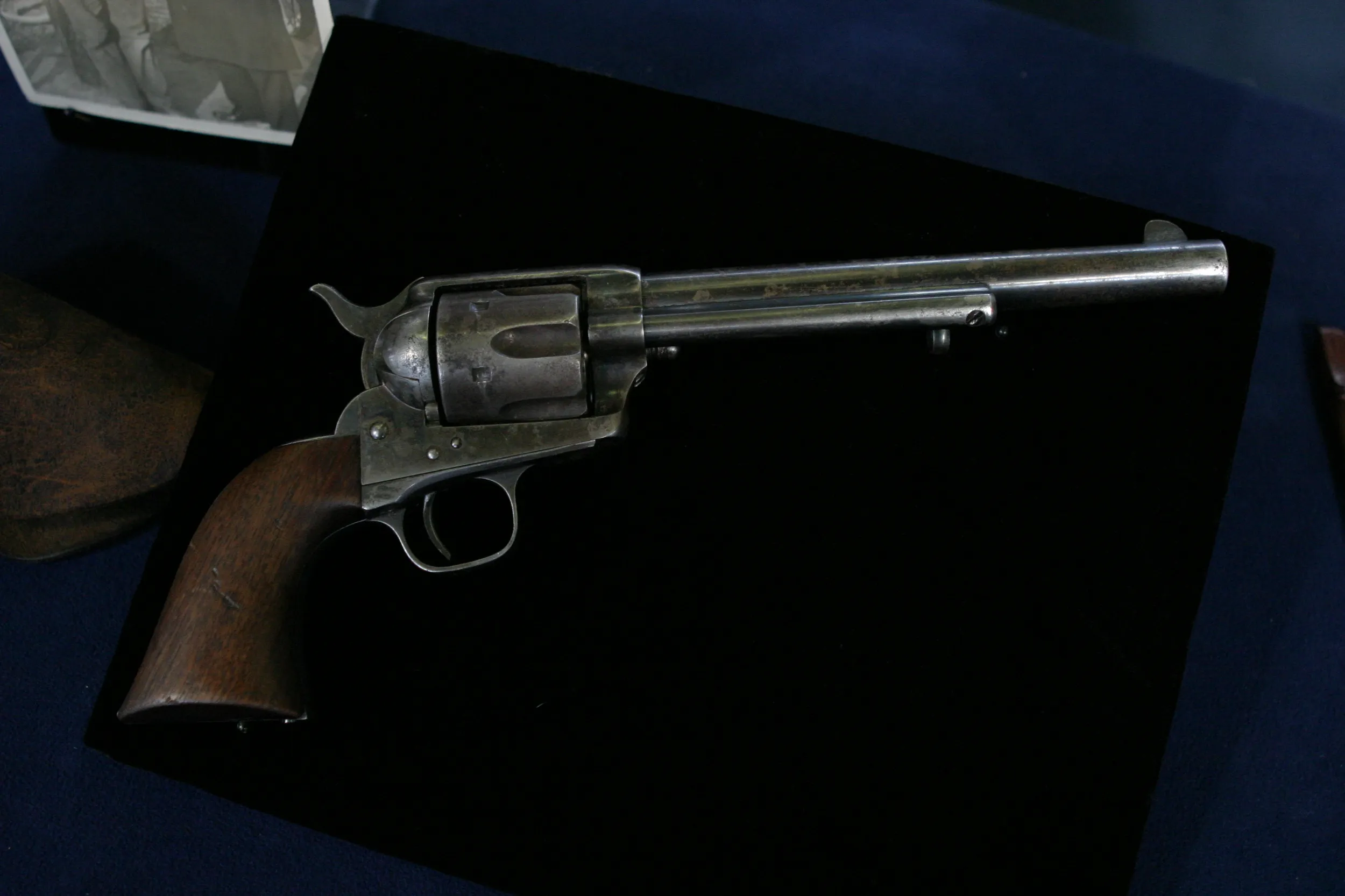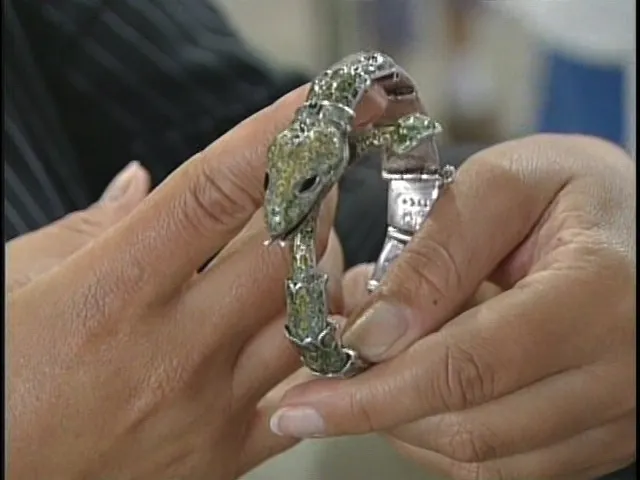GUEST: My mother and I do a lot of shopping. We hit estate sales, garage sales, thrift shops, and I bought it at a thrift shop here in Kansas City less than three weeks ago, actually. They just were putting out a number of silver plate items, and this piece just looked so elegant, and I noticed the stamps on it, so I figured it was old. I didn't know how old. And the price was right, and so I bought it.
APPRAISER: What was the price?
GUEST: $5.99.
APPRAISER: $5.99?
GUEST: Five dollars and 99 cents.
APPRAISER: It's an English silver urn. We call this style or shape a campana form urn, and it's because it's shaped like an upturned bell. It was made in 1826 by Benjamin Preston. It would be the George IV period. The mark on the far right here is the duty mark. That is the mark that shows the duty had been paid to the crown. Next to that, this is the date letter "L" for 1826. Next to that is the leopard's head, which shows that it was made in London. Next is the English Sterling guarantee mark, which is a Lion Passant, which is the most common English silver mark. And then the maker's mark, "BP." So we have the full complement of English hallmarks. So often with these, they were given as presentations and they were engraved on the front of them for somebody's good service or even their own armorial crest or something like that. To have this one completely devoid of any ornamentation on the upper section is itself I think quite unusual.
GUEST: Great.
APPRAISER: Below that, we've got the wonderful acanthus scroll handles and then the lobed body here and a circular foot. It's a very classic piece of English silver-making.
GUEST: It is beautiful.
APPRAISER: If this was to be sold at auction, I would estimate it to sell for between $1,500 and $2,000.
GUEST: That's really great. I did not anticipate... I did not know it was sterling, actually. That's fantastic.
APPRAISER: $5.99 is an exceptional find.
GUEST: It is. Thank you so much.











